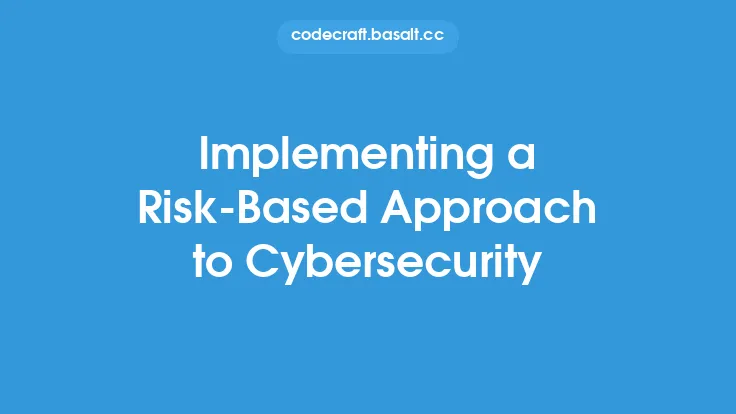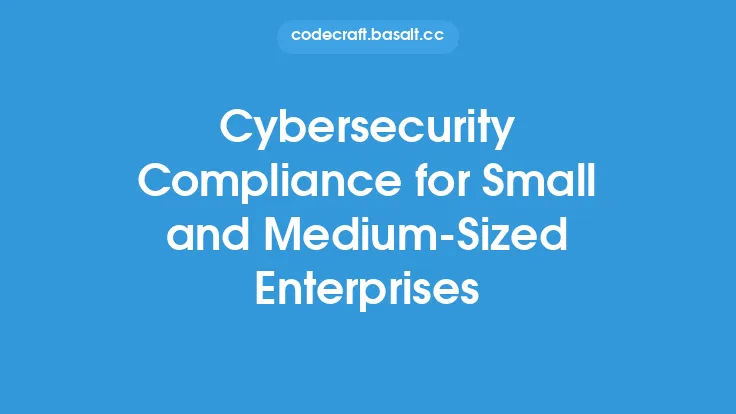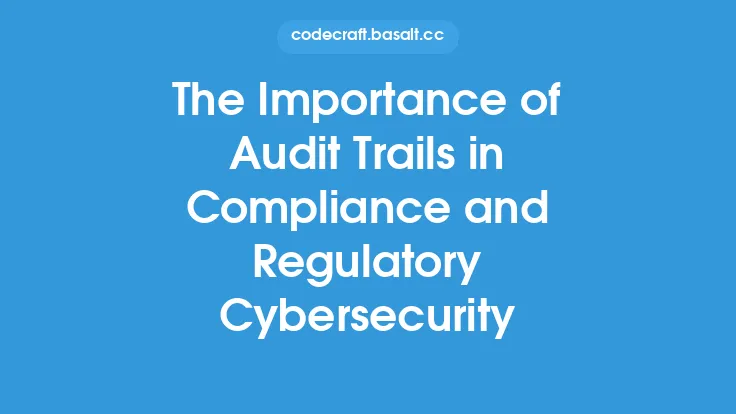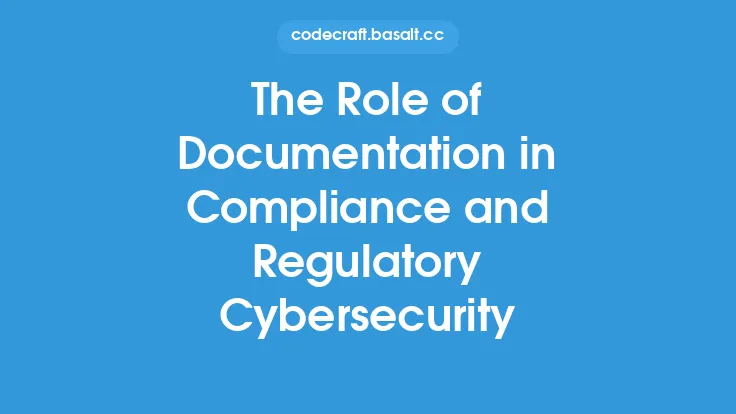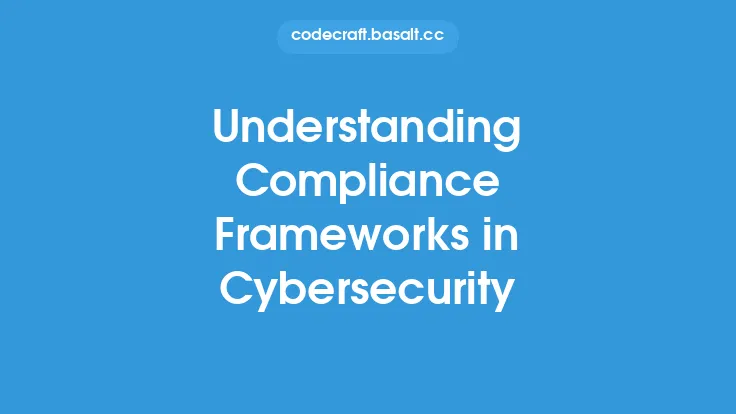Implementing effective cybersecurity policies is crucial for organizations to protect their sensitive data and maintain the trust of their customers, partners, and stakeholders. Compliance-driven cybersecurity policies are designed to ensure that an organization's cybersecurity practices align with relevant laws, regulations, and industry standards. In this article, we will delve into the key aspects of implementing compliance-driven cybersecurity policies, including the importance of risk assessment, policy development, and continuous monitoring.
Introduction to Compliance-Driven Cybersecurity
Compliance-driven cybersecurity policies are designed to ensure that an organization's cybersecurity practices meet the requirements of relevant laws, regulations, and industry standards. These policies are typically based on a thorough risk assessment, which identifies potential vulnerabilities and threats to an organization's sensitive data. The goal of compliance-driven cybersecurity policies is to provide a framework for protecting sensitive data, preventing cyber attacks, and maintaining the trust of customers, partners, and stakeholders.
Risk Assessment and Policy Development
The first step in implementing compliance-driven cybersecurity policies is to conduct a thorough risk assessment. This involves identifying potential vulnerabilities and threats to an organization's sensitive data, as well as assessing the likelihood and potential impact of a cyber attack. The risk assessment should consider factors such as the type of data being protected, the potential consequences of a data breach, and the effectiveness of existing cybersecurity controls. Once the risk assessment is complete, the organization can develop policies and procedures that address the identified risks and ensure compliance with relevant laws and regulations.
Key Components of Compliance-Driven Cybersecurity Policies
Compliance-driven cybersecurity policies should include several key components, including:
- Data classification and handling procedures: These procedures should outline how sensitive data is classified, stored, and transmitted within the organization.
- Access control and authentication procedures: These procedures should outline how access to sensitive data is controlled and authenticated, including the use of passwords, multi-factor authentication, and role-based access control.
- Incident response and management procedures: These procedures should outline how the organization responds to and manages cyber attacks, including the notification of affected parties and the implementation of corrective actions.
- Continuous monitoring and review procedures: These procedures should outline how the organization continuously monitors and reviews its cybersecurity policies and procedures to ensure they remain effective and compliant with relevant laws and regulations.
Technical Controls for Compliance-Driven Cybersecurity
In addition to policy development, technical controls play a critical role in implementing compliance-driven cybersecurity policies. These controls may include:
- Firewalls and intrusion detection systems: These controls can help prevent unauthorized access to an organization's network and detect potential cyber attacks.
- Encryption technologies: These controls can help protect sensitive data both in transit and at rest.
- Secure socket layer/transport layer security (SSL/TLS) protocols: These protocols can help ensure the secure transmission of sensitive data over the internet.
- Virtual private networks (VPNs): These networks can help ensure the secure transmission of sensitive data over public networks.
Continuous Monitoring and Review
Continuous monitoring and review are critical components of compliance-driven cybersecurity policies. This involves regularly reviewing and updating policies and procedures to ensure they remain effective and compliant with relevant laws and regulations. Continuous monitoring and review may include:
- Regular security audits and risk assessments: These audits and assessments can help identify potential vulnerabilities and threats to an organization's sensitive data.
- Penetration testing and vulnerability scanning: These tests can help identify potential weaknesses in an organization's cybersecurity controls.
- Compliance monitoring and reporting: This involves regularly monitoring and reporting on an organization's compliance with relevant laws and regulations.
Best Practices for Implementing Compliance-Driven Cybersecurity Policies
Implementing compliance-driven cybersecurity policies requires a thorough understanding of relevant laws and regulations, as well as the technical controls and procedures necessary to ensure compliance. Best practices for implementing compliance-driven cybersecurity policies include:
- Conducting regular risk assessments and security audits: These assessments and audits can help identify potential vulnerabilities and threats to an organization's sensitive data.
- Developing and implementing comprehensive cybersecurity policies and procedures: These policies and procedures should outline how sensitive data is protected, accessed, and transmitted within the organization.
- Providing regular training and awareness programs: These programs can help ensure that employees understand the importance of cybersecurity and the procedures for protecting sensitive data.
- Continuously monitoring and reviewing cybersecurity policies and procedures: This involves regularly reviewing and updating policies and procedures to ensure they remain effective and compliant with relevant laws and regulations.
Conclusion
Implementing compliance-driven cybersecurity policies is crucial for organizations to protect their sensitive data and maintain the trust of their customers, partners, and stakeholders. By conducting thorough risk assessments, developing comprehensive policies and procedures, and implementing technical controls, organizations can ensure compliance with relevant laws and regulations and protect themselves against cyber attacks. Continuous monitoring and review are critical components of compliance-driven cybersecurity policies, and organizations should regularly review and update their policies and procedures to ensure they remain effective and compliant. By following best practices and staying informed about relevant laws and regulations, organizations can implement effective compliance-driven cybersecurity policies that protect their sensitive data and maintain the trust of their stakeholders.
